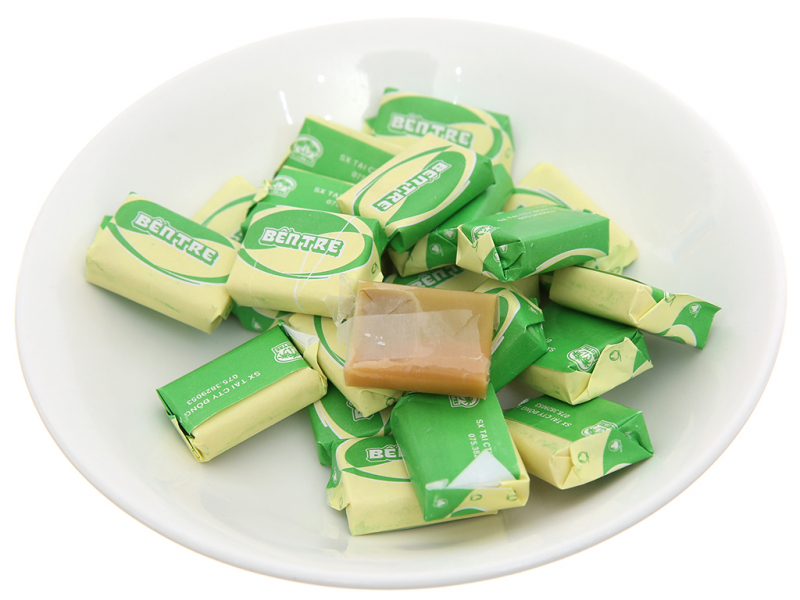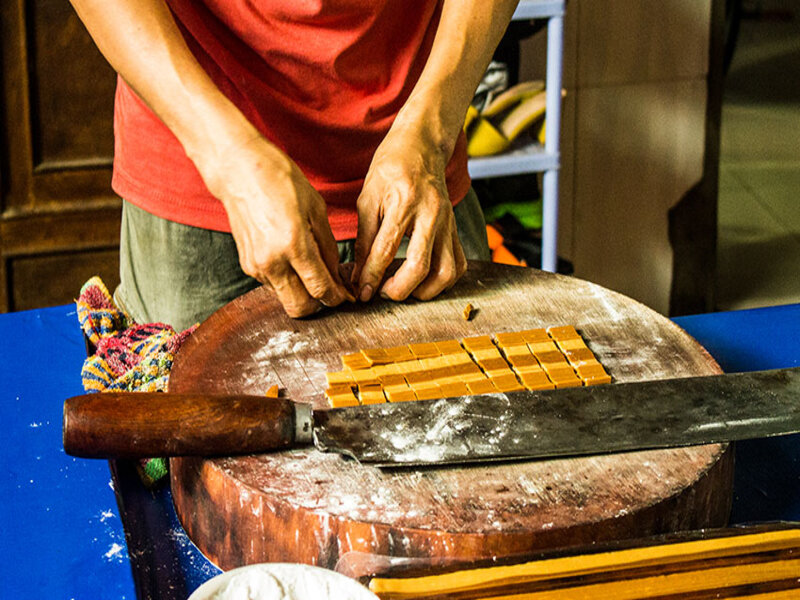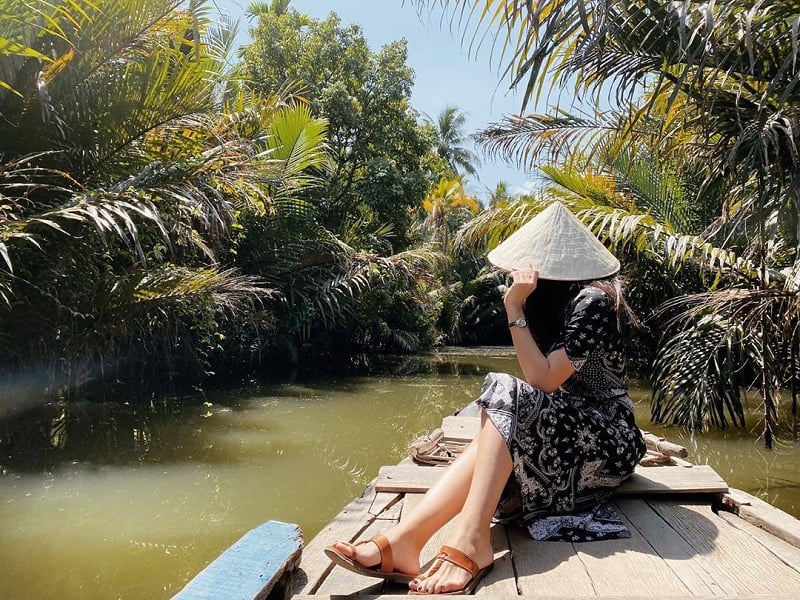Nestled within the vibrant tapestry of Vietnamese culinary delights, coconut candy stands out as a sweet gem, capturing the essence of the country's tropical flavors. Originating from the Mekong Delta, this delectable treat has become a beloved souvenir for visitors and a cherished snack for locals. In this blog, Viet Cruise Tours will explore the irresistible allure of Coconut Candy Vietnam, from its humble origins to the delightful flavors that make it a must-try delicacy.

The journey of Vietnam's coconut candy begins with the abundant coconut palms that thrive in the Mekong Delta's tropical climate. The coconuts are carefully harvested, and their husks expertly removed to reveal the pristine white flesh within. It is this coconut flesh that forms the foundation of the candy, a key ingredient that imparts a distinct and delightful flavor to the finished product.
In traditional workshops scattered across the Mekong Delta, craftsmen and craftswomen employ time-honored methods to extract the coconut's essence. The white flesh is meticulously grated, creating the base for the candy. It is then combined with sugar and malt syrup, and the mixture is subjected to a precise cooking process. This skilled alchemy results in a smooth, velvety consistency that sets Vietnamese coconut candy apart.
Vietnam's coconut candy is not just a culinary delight; it is also a cultural emblem. Over time, the popularity of Vietnam coconut candy has grown beyond local markets to become a cultural symbol and a culinary ambassador for the Mekong Delta. As tourists and locals alike indulge in this sweet delicacy, they partake in a taste that embodies the traditions, flavors, and craftsmanship of the region.
Making coconut candy involves a straightforward yet meticulous process that has been perfected over generations. Ben Tre, located in the Mekong Delta of Vietnam, is renowned for its coconut products, and the coconut candy produced here is a local specialty. Here's a simplified recipe to make the coconut candy at home:

Husk and crack open the coconuts. Extract the white coconut flesh from the shells. You can use a coconut grater to finely shred the coconut meat.
In a mixing bowl, combine the shredded coconut with water. Squeeze and knead the mixture to extract coconut milk. Strain the coconut milk to obtain a smooth liquid.
In a large pan or wok, combine the coconut milk with granulated sugar and malt syrup. Stir the mixture over medium heat until the sugar dissolves completely.
Continue to cook the mixture on low to medium heat, stirring consistently. The goal is to evaporate excess moisture and achieve a thick, sticky consistency. This may take some time, so patience is key.
For added flavor, you can introduce variations such as sesame seeds, durian essence, or pandan extract during the cooking process. Stir in these ingredients according to your taste preferences.
Once the mixture reaches the desired consistency, pour it onto a tray or flat surface lined with parchment paper. Allow it to cool for a few minutes until it's cool enough to handle.
Using a sharp knife, cut the cooled coconut mixture into bite-sized squares or rectangles. Traditional coconut candy vietnam is usually about the size of a small candy.
If desired, you can individually wrap the coconut candy pieces in wax paper or plastic wrap for a more polished presentation.
Your homemade coconut candy is now ready to be enjoyed! The candies can be stored in an airtight container for several days.
Vietnam coconut candy comes in various types, each offering a unique flavor profile and texture. Here are some popular types of coconut candy found in Vietnam:

The traditional and most common type, made with shredded coconut, sugar, and malt syrup. It has a sweet and creamy flavor with a chewy texture.
For those who appreciate the distinctive taste and aroma of durian, this type combines the creamy durian essence with the sweetness of coconut candy.
Pandan leaves lend a unique, fragrant aroma and vibrant green color to coconut candy. The pandan-flavored version offers a delightful twist to the classic treat.
In some regions, coconut candy is wrapped in edible rice paper, adding a thin layer of texture to the treat.
Exploring the areas surrounding local coconut candy factories in Vietnam offers a range of enriching activities. Here are some things to do:

Take a stroll or rent a bike to explore the charming villages surrounding the coconut candy factory. Experience the local way of life, observe traditional houses, and interact with friendly residents.
Explore nearby temples and pagodas to gain insights into the spiritual and cultural practices of the region. These places often showcase beautiful architecture and are hubs of community activity.
If the coconut candy factory is located near the Mekong River, consider taking a boat tour. Explore the waterways, witness floating markets, and enjoy the scenic beauty of the Mekong Delta.
Look for traditional craft workshops in the vicinity. You might find artisans creating products like handmade crafts, woven goods, or pottery. Participate in workshops to try your hand at these crafts.
Discover nearby fruit orchards, which are abundant in the Mekong Delta. Depending on the season, you might have the opportunity to pick and taste fresh tropical fruits.
Capture the beauty of the landscape, local life, and cultural elements with a photography excursion. The Mekong Delta offers a wealth of subjects, from vibrant markets to serene river scenes.
*Address:
- 2 Paris Commune, Ben Nghe, District 1
- 241 Pham Ngu Lao St, Pham Ngu Lao Ward, District 1
*Website: https://vietcruisetours.com/
*Hotline/Whatsapp: +84 908.785.680
*Email: contact@vietcruisetours.com
Newer articles
Older articles